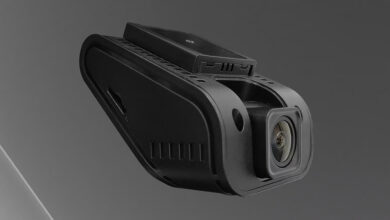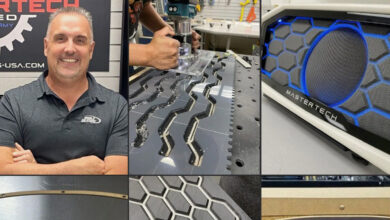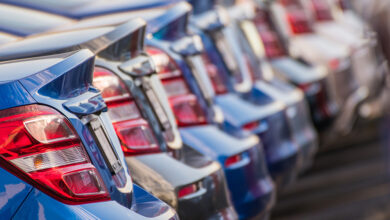10 Automakers Make AEB Standard Across Lineup
 Ten automakers have fulfilled a voluntary commitment to equip nearly all the new light vehicles they produce for the U.S. market with automatic emergency braking (AEB) ahead of the 2022-23 target, the Insurance Institute for Highway Safety (IIHS) and the National Highway Traffic Safety Administration (NHTSA) announced.
Ten automakers have fulfilled a voluntary commitment to equip nearly all the new light vehicles they produce for the U.S. market with automatic emergency braking (AEB) ahead of the 2022-23 target, the Insurance Institute for Highway Safety (IIHS) and the National Highway Traffic Safety Administration (NHTSA) announced.
The 10 manufacturers put the technology on more than 95 percent of the vehicles they produced between Sept. 1, 2019, and Aug. 31, 2020. Another three automakers exceeded the 90 percent threshold. However, five of the 20 automakers that signed the commitment equipped less than half of their vehicles with AEB.
Of the 10 automakers that met the commitment ahead of schedule, four — Audi, Mercedes-Benz, Volvo and Tesla — did so last year, according to manufacturer reports. This year, they are joined by BMW, Hyundai, Mazda, Subaru, Toyota and Volkswagen.
The reports are submitted annually by the 20 manufacturers that pledged to equip at least 95 percent of their light duty cars and trucks with a gross vehicle weight of 8,500 pounds or less with the crash avoidance technology by the production year beginning Sept. 1, 2022. The commitment was brokered in 2015 by the Insurance Institute for Highway Safety and the National Highway Traffic Safety Administration (NHTSA).
“This voluntary effort is succeeding in getting an important crash prevention technology into vehicles quickly,” said IIHS President David Harkey. “It’s great to see AEB become a mainstream safety feature that’s now standard equipment not just on luxury cars and SUVs, but on affordable models as well.”
In addition to the 10 manufacturers already meeting the AEB commitment, another three — Ford, Honda and Nissan — put the technology on 9 out of 10 vehicles they produced in the last year. Two automakers were in the middle of the pack, with Kia equipping 75 percent of its vehicles with AEB over the past year, followed by Porsche at 55 percent.
The voluntary commitment doesn’t specify phase-in milestones, but Fiat Chrysler, General Motors, Jaguar Land Rover, Maserati and Mitsubishi have equipped fewer than half of the units they produced with AEB that meets the performance requirements of the voluntary commitment.
“Many automakers have shown ingenuity and agility in making city-speed AEB standard. NHTSA should build on this progress by ensuring that by 2025 all new vehicles come standard with more advanced systems that can also detect pedestrians and work at highway speeds,” said David Friedman, vice president of advocacy for Consumer Reports. “The few automakers lagging far behind on their AEB commitment — and especially Fiat Chrysler — must lay out exactly how they’ll reach and surpass where the industry is today.”
Information gathered by Consumer Reports shows that more automakers are making city-speed AEB standard equipment on 100% of their models, guaranteeing that the technology will be included on all new vehicles. Six automakers are doing so in model year 2021, compared with just two automakers in model year 2020. This increase suggests a growing understanding by automakers that their customers expect AEB to come standard on any new vehicle they may buy.
Of all the companies, Ford logged one of the biggest year-over-year improvements in the portion of vehicles equipped with AEB, reaching 91 percent in 2020, compared with 65 percent in 2019 and just 6 percent the year before. Ford is also ahead of the game for the next stage of the commitment — installing AEB on vehicles in the 8,501-10,000-pound range by 2025-26. Ford has equipped 62 percent of those heavier vehicles with AEB.
Of the four other automakers that reported producing vehicles in that weight range for the U.S. market over the past year, Fiat Chrysler was at 11 percent and Nissan 9 percent. Mercedes-Benz and General Motors were both at zero.
Under the terms of the voluntary commitment, manufacturers must attest that the AEB system on their vehicles meets certain performance standards for both forward collision warning (FCW) and automatic emergency braking. The FCW must meet a subset of NHTSA’s current 5-Star Safety Ratings program requirements on the timing of driver alerts.
The AEB must earn at least an advanced rating in the current IIHS front crash prevention track tests. The baseline performance measures for these tests are a speed reduction of at least 10 mph in either the IIHS 12 or 25 mph tests, or a speed reduction of 5 mph in both of the tests.
The voluntary commitment is expected to prevent 42,000 crashes and 20,000 injuries by 2025. The estimate is based on IIHS research that found that front crash prevention systems with both forward collision warning and automatic emergency braking cut rear-end crashes by half.



